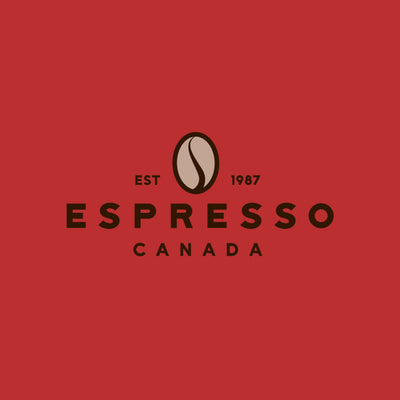A Guide to Better Understanding Coffee Labels
Aug 18, 2020
Coffee Terms: What You Need To Keep in Mind
Language used in the coffee industry can be confusing. This sector, like many others, does not have a standard. This results in the use of language which is used inconsistently and, in some cases, terms are used inappropriately.
In addition, coffee language is strongly influenced by coffee culture and traditions of various geographical regions which don't always translate well. Plus, marketers use language strictly to seduce consumers and so, uncertainty prevails.
Key Coffee Terms You Should Know
The following are terms which coffee lovers should know. Understanding these terms will help you better understand the product you plan to purchase and really help you determine if the manufacturer is the real deal and knowledgable about coffee.
Roast
All coffee beans begin as green beans. The process of applying heat or cooking the green beans is known as 'roasting'. The two variables that impact the roast is the amount of heat applied (temperature) and the amount of time (how long the beans are cooked). The variations of these two elements greatly impact the roast. The final result are beans that range in colour from light to very dark.
The general terms used to describe how long beans have been roasted has been standardized by the Specialty Coffee Association (SCA) to include the following: light, light-medium, medium, medium-dark, dark, and very dark.
So which roast do you choose? Well, that depends on what kind of coffee you plan to make and your personal palette. What is important, however, is the need to understand there are no such things as espresso beans or regular coffee beans; there are only beans which have been roasted to certain levels.
Those who use terms like espresso beans on their label are not giving you an accurate understanding of the roast level because espresso can be with beans that range from the medium to dark roast. Similarly, drip coffee can be made with roasts that span the entire roast spectrum.
Coffee labels that help you distinguish the roast level can help the consumer elevate their coffee knowledge and refine their preferences. You know how you like to brew your coffee (espresso, pour over, aeropress)...now it is time to determine which roast helps achieve the complexity, richness, and taste you desire.
A reputable roaster should clearly outline the roast level and the roasting date on their label and not leave the consumer wondering about the beans they will find in the package.
Brew
The brew is how you plan to use the coffee beans. Let's make an analogy to cooking: you buy your ingredients (roasted coffee beans) and now you have to determine how to prepare those ingredients into a finished product (coffee). The preparation choices are endless; for example, you can fry, steam, grill, braise or poach your ingredients. Each preparation requires a different appliance and technique to achieve the desired final dish.
The same holds true for coffee preparation. You can prepare your coffee beans in a number of different ways using various appliances; for example, superautomatic espresso machine, pour over, aeropress, or drip. What we know is that certain roasts shine with specific brewing methods.
A good coffee label should give you an indication what the roast level is best suited for. After all, the coffee roaster is intimately involved in how the beans were roasted and therefore can suggest what brewing method they intended for that particular roast. However, don't be limited to what the roaster outlines. Chefs are able to take ingredients and use them in new and creative ways to create exciting new tastes.
While a coffee roaster may indicate a roast is ideal for espresso; for example, consider this only one viable brewing method. There is no reason why a roast ideal for espresso cannot be used for aeropress or pour over. This is where the individual palette and experimentation comes into play.
French press and cold brew, for example, are immersion brews.
Aeropress, moka pot, and espresso are all pressure brews.
Finally, pour over and drip coffee are gravity brews.

Origin
This term refers to the point of origin of the green beans used for the final product. Where do the beans come from? Coffee is produced in many parts of the world. In some cases, a bag of coffee is made from beans that comes from a single country. In other cases, blends of beans are put together to create a final product.
Single Origin
Single origin is a term has become popularized in the last decade. Although widely used, the term is very vague and confusing and is often used incorrectly by marketers who are trying to sell an average product at a premium price.
Single origin means different things to different roasters. Some use the term to convey beans that come from a single country. Others use the term to define coffee that comes from a single region or even a single farm within a region.
The fact is that coffee beans can vary dramatically from region to region based on climate, elevation, soil quality, etc. So, if you are a diehard coffee aficionado who cares about the granular details of your coffee, you may need more information other than term single origin on the label. Some labels include the details about where the beans were cultivated including elevation but this may not be meaningful unless you are a very serious coffee taster.
Other Terms Which Coffee Roasters Use to Describe Coffee
Acidity
This tasting term is one of the most important and misunderstood. Most people relate acidity with objective pH level. They think of grapefruit juice or the associated stomach upset but all coffees are low in this sort of acidity.
The word acidity as it pertains to coffee is a positive term that denotes sparkling crispness or brightness taste of the coffee. Coffee grown at higher altitudes often showcase more structured, complex, and positive acidity. Coffees without such acidity will taste flat and uninteresting.
Body
The term body is often used interchangeably with mouth feel. Body is the sensation of heaviness in the mouth; it also registers as a rich, full feeling at the back of the palate. Body is a sensation, an element of taste, not a measurable fact.
As coffee approaches a medium to dark brown roast body increases. As it passes to a very dark roast the body decreases.
Aroma
Although this term is self-evident (the smell the beans exudes) in its general definition, it is important as it relates to roast. Aroma is less developed in very light roasts, peaks in intensity in medium to medium-dark roasts and falls off in very dark roasts. Aroma is the first indicator and strong influencer of what the taste of the coffee will be.
Flavour
The flavour refers to the taste. Consumers want to know what they can expect in the category of flavour with the beans they choose. Just as wine is often described with certain flavour notes so too is coffee. Aroma and flavour go hand in hand. The SCA has developed this aroma / flavour wheel to provide language to describe coffee beans. This is what roasters use to help describe the flavour of their creations.

Coffee Labels - Conclusion
Coffee labels may have a variety of information. Each piece of information is intended to provide insight into the coffee beans you will be brining home, how best to use them and what you can expect in terms of the final product.
At the end of the day, we all know what we like and what we don't like in terms of coffee taste. Understanding what contributes to the taste you enjoy will help you develop as a coffee connoisseur and help you choose the best beans to achieve the taste you are looking for.
Real coffee roasters want their customer to educate themselves about their coffee beans. Coffee roasting is both and art and science and the more you learn about your coffee beans the more you will enjoy each cup of coffee.
If you have any questions about coffee roasting, please contact us.






1 comment
I enjoy Faema espresso coffee bean but have no idea where beans come from and what category it falls in. I have to order on line and would like to buy locally or store brand bean. Could you help me to find a bean similar without too much oil that would ruin my new Jura E6. Faema is the bean that came with the machine.